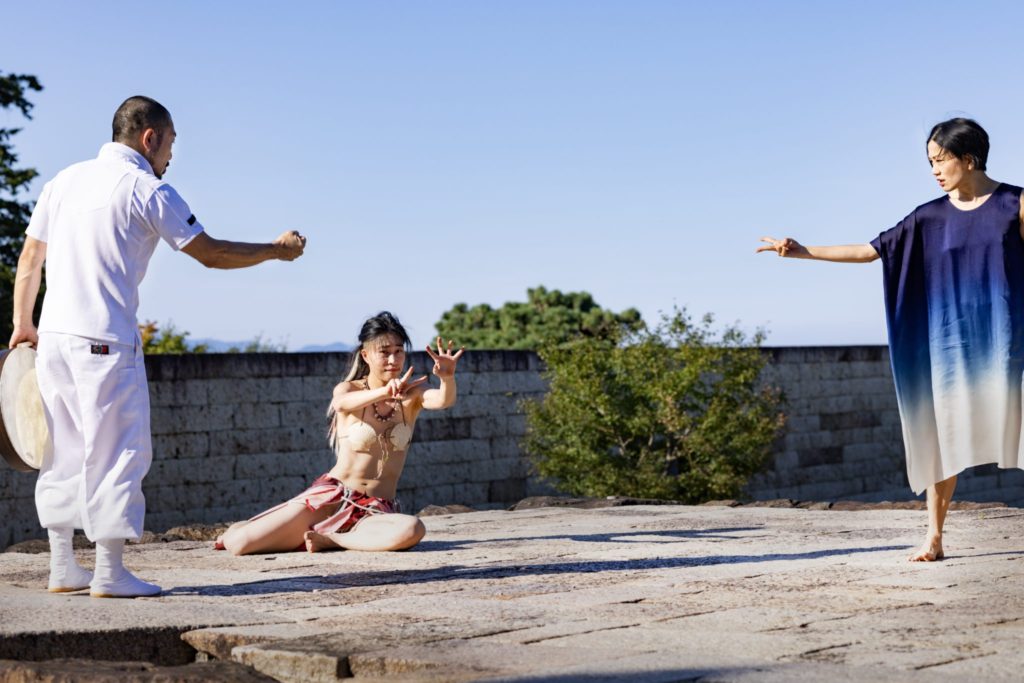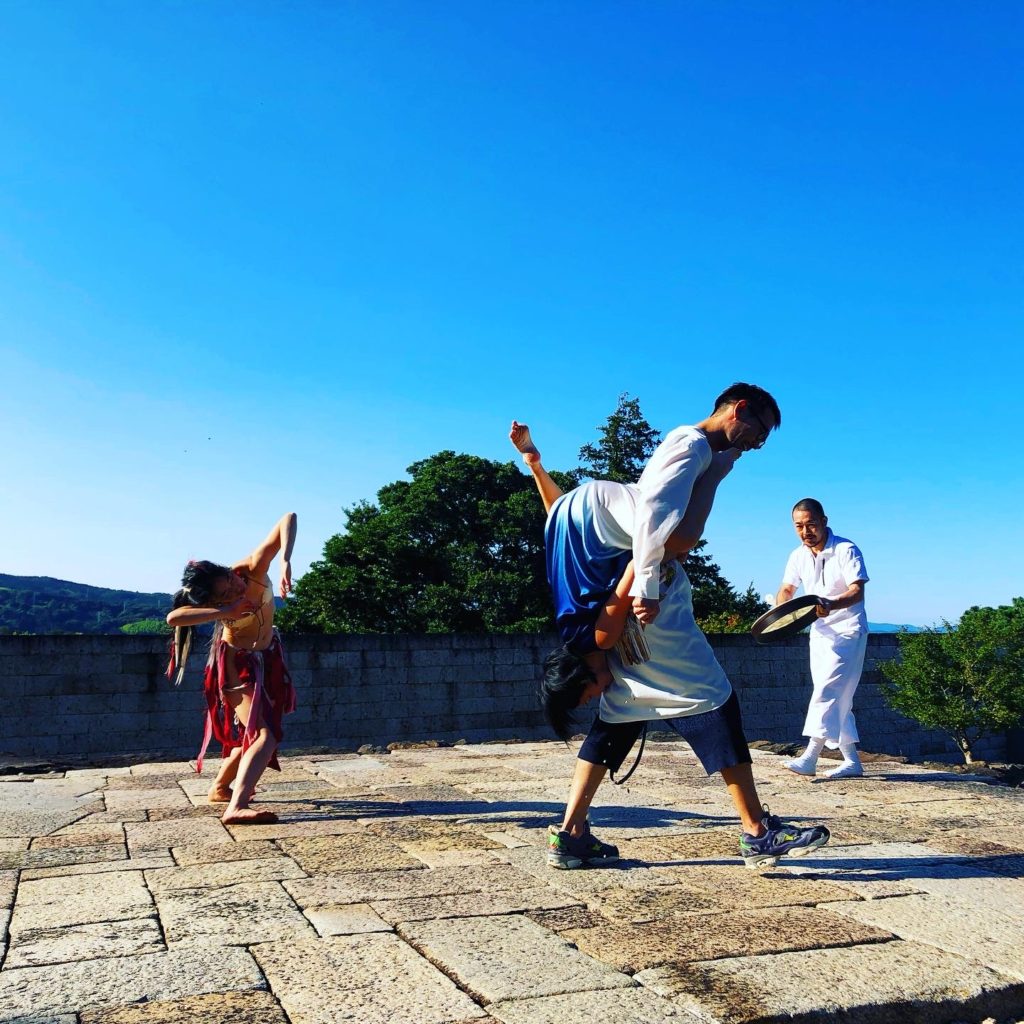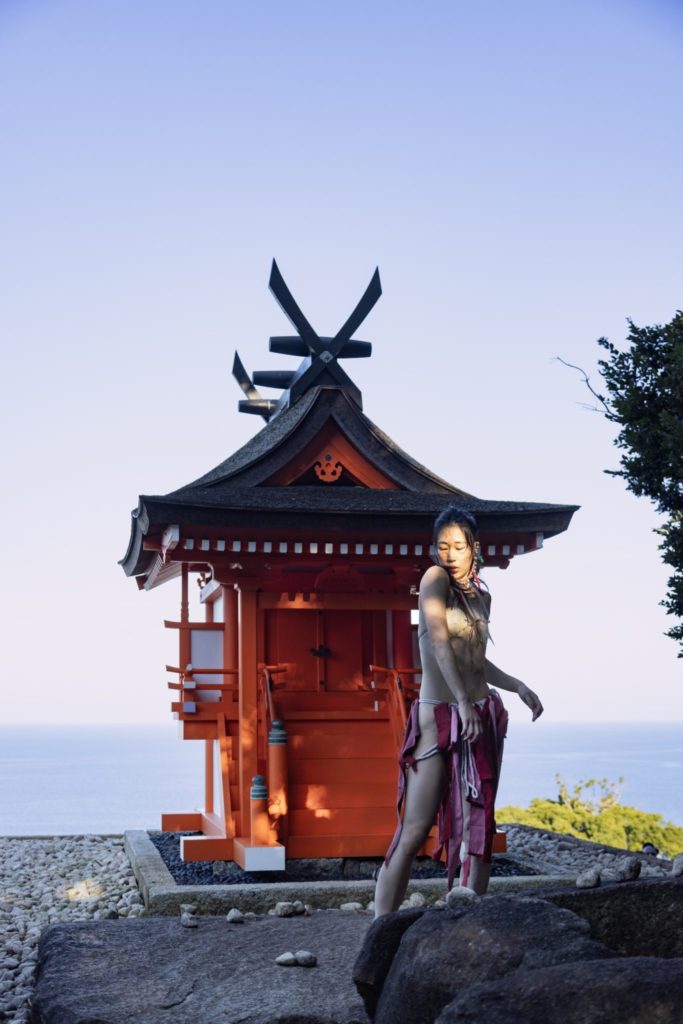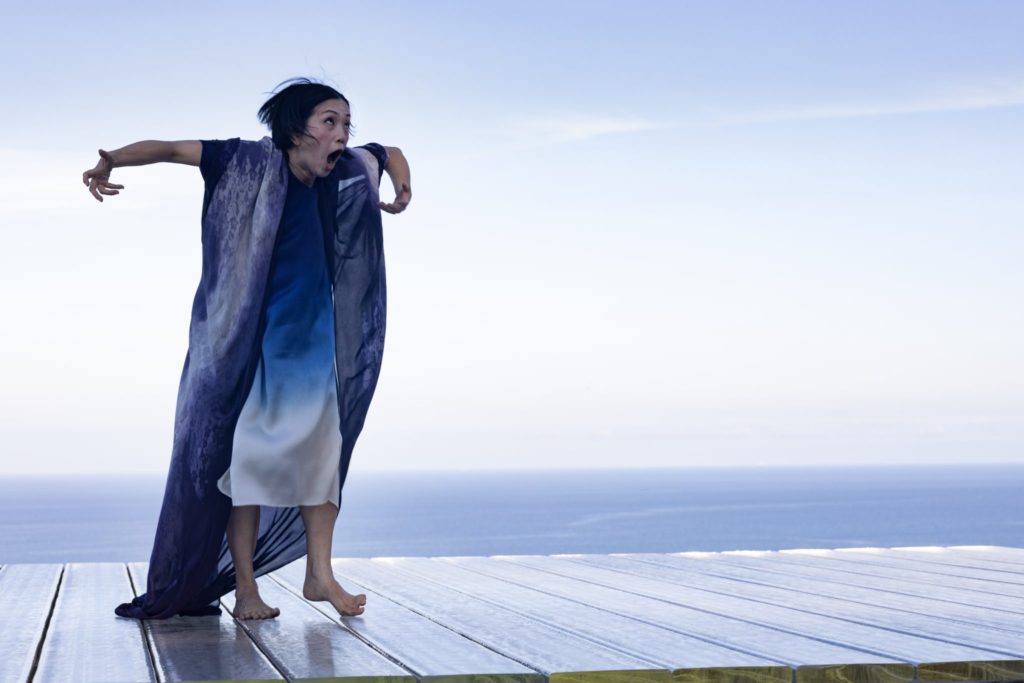Born in Tokyo. Graduated Keio University Faculty of Literature, Department of Philosophy, aesthetics and art history major. Since 1990s, She has been at the forefront of the Japanese art scene as a writer / art journalist / art producer. 2003 spring, launched an art bar TRAUMARIS in Roppongi, was moved to Ebisu NADiff building, as an alternative space TRAUMARIS where art exhibitions, live performances, food and drink can be enjoyed. After closed the space, is currently involved in various art activities beyond the boundaries of the genre as an art producer. A jury for Yokohama Dance Collection’s competition from 2011 to 2016. A producer of Dance and Nursery!! Project since 2016. Established RealJapan project as a co-director. http://www.traumaris.jp Photo by Mari Katayama
@Odawara Art Foundation
No other form of expression I’ve seen at the Enoura Observatory has ever struck my body as powerfully as this one; a one-day-only dance performance held this July by Kaori Ito, a choreographer and dancer who this year assumed directorship of the Centre dramatique national de Strasbourg Grand Est (TJP) in France.
Kaori Ito trained at the Alvin Ailey American Dance Theater in New York, and after being selected for the lead role in Philippe Decouflé’s “Iris” in 2003, she has worked with world-renowned choreographers including James Thiérrée, Sidi Larbi Cherkaoui, and Alain Platel. In 2015 she relocated to France and founded her own company, HIME.
In 2018, she gave a solo performance for Hiroshi Sugimoto’s exhibition at the Palace of Versailles, dancing inside Glass Tea House “Mondrian” set in the palace’s French-style garden. Perhaps from the memory of having seen a glimpse of that dynamic performance on film, I approached this show expecting a single butterfly to leap vigorously out of a glass specimen box.

@Odawara Art Foundation
The scorching heat of summer had subsided and the sun was setting on the stone stage at Enoura when the three performers began their act.
Actor Ryo Yoshimi was playing various percussion instruments as if he were a street performer beating drums to attract onlookers, announcing that a special performance of kagura (dances to honor Shinto deities) was about to begin. Then, from beneath a heavy sarcophagus, there was the stirring presence of some kind of creature. A white leg poked out, and the goddess Ame no Uzume—or rather dancer and choreographer Mikiko Kawamura—clad in a shell bra and a straw skirt, slowly emerged. (Kawamura related that the scallop shells were a souvenir from a barbecue party held a decade ago at the home of contemporary artist Tabaimo to celebrate a successful performance.)
Next to emerge from the gap between the boulders was not the sun goddess Amaterasu, but the slender arms and legs of Kaori Ito. The butterflies, all now back in this world, roared as they stood firm facing the sea (they weren’t butterflies), intertwined with the most handsome man in the audience (praying mantises, perhaps), and went wild with joy at having had their lives restored.
When Yoshimi recited a line from Shakespeare, Ito pointed her finger at him and exclaimed sharply, “That’s a lie!”. This moment may have seemed startling to most of the audience members involved in linguistic expression.
Here the three performers played rock-paper-scissors to determine their order before dispersing over the vast grounds. They moved from one place to the other as they performed, leading the audience along across a stone staircase overlooking citrus groves and down little woodland paths.

Photo: Chie Sumiyoshi
Hurriedly following Ito’s light steps, we met up with Kawamura dancing at a small shrine, a sanctuary of the Kasuga faith established after inviting a deity from the Kasuga Taisha Shrine in Nara.
“When I inspected the venue beforehand and saw the shrine’s torii gate, I knew I wanted to perform with Mikiko (Kawamura),” Ito said. “When she shares her dance with all her sensitivity, the way she perceives togetherness is different from that of other dancers. She’s quick like a butterfly, and she captures the relationships between people, trees, and landscapes with special movements of the body she was born with—or musically before she even begins to move.”

@Odawara Art Foundation
Mikiko Kawamura has never shown restraint or mercy in her own works of dance or music, nor in guest performances such as in the Butoh works of Takao Kawaguchi and plays of Satoko Ichihara. However, this must be the first time that, in a work directed by someone else, she has so freely indulged in the range of movement her body and mind allow.
As if to worship the vermilion shrine reflected in the azure sea and sky, the two bodies moved dynamically together, celebrating life through non-verbal dialogue. This was a memorable scene, in which Ito and Kawamura’s maturely wild nature made me fantasize about the possession of a goddess. I felt as if I had received a little prayer in that moment, and even experienced the illusion that my own possession had been blessed.
“I created this work while thinking of primordial landscapes,” Ito said. “In Japanese mythology, sacred kagura is said to have originated as a dance to pray for rain. The primordial dancer is the miko, the priestess who delivers divine messages, becoming part of nature that already exists there. I believe that as a director, my job is also to discover things that are already there, and to spread what has circulated through the tool that I am.”

@Odawara Art Foundation
Having passed through citrus-covered mountains and bamboo groves, the audience gathered on a stage made of glass. As its optical glass shimmered and blended into the sea, Yoshimi’s taiko drumming echoed brilliantly, while Ito and Kawamura floated around in a relaxed manner. Ito took off the robe she had been wearing, threw away her underwear, and began to dance in the nude.
Kawamura removed her shell costume and joined her, followed by Yoshimi who had finished playing (“Today marks my rebirth,” he said with both joy and shyness), and the three of them lay down on the glass stage with their limbs spread out. Being dressed and sitting in the audience suddenly seemed silly, and I might have joined them there if anyone else I knew hadn’t been present.
In past interviews, Ito has said that “having something more reliable than words sharpens one’s sensibility, and that comes out in both dance and sculpture.” (Both of her parents are sculptors.) Like the creative process in which artists try to sense the meanings around each other’s bodies, the artistic experience I had on that day was nothing less than a primordial exchange that permeated the flesh and blood of the bodies present. Perhaps this sort of exchange could be construed as a “lie-free” language, imbued with a far deeper receptivity than actual language, the discrepancies and distortions of which at times lead to division and confrontation.
A crisp and pleasant air filled Enoura. The scenery was that of ancient times, with people together, whether hosts or guests, enjoying the blessings of nature in the form of their bodies. The wind blowing in from the sea caressed these bodies, sweeping away all manner of words as it heralded the day’s dusk.
Translated by Ilmari Saarinen
INFORMATION
Kaori Ito Dance Performance “Jankenpon”
Date: July 23, 2023
Venue: Odawara Art Foundation Enoura Observatory
Production and Composition: Kaori Ito
Costumes: Aurore Thibout
Cast: Kaori Ito, Mikiko Kawamura, Ryo Yoshimi
Organized by Odawara Art Foundation









